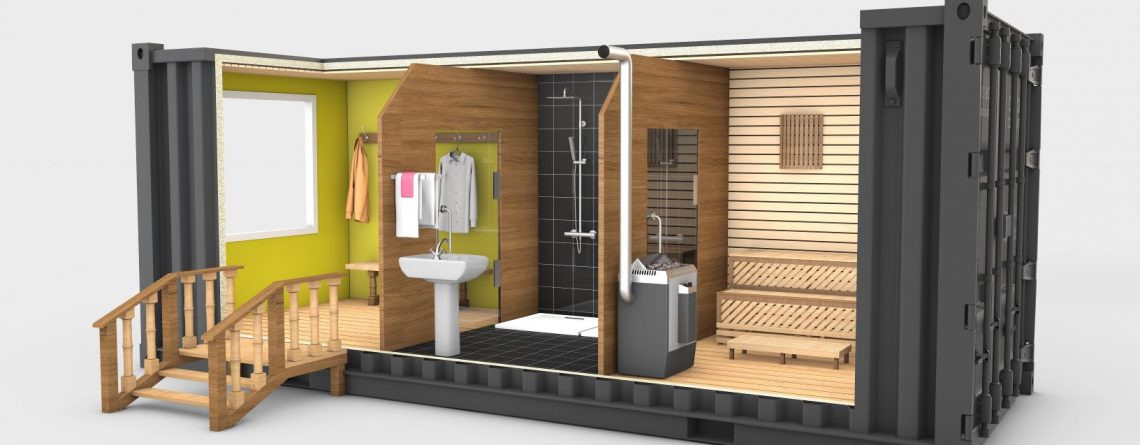The Basics of Building a Shipping Container Home
Building a home out of a shipping container is a project many have chosen to participate in. Why? Because it’s a whole lot of fun to do. Plus, you get to live inside an amazing living space that you created yourself. There are plenty of reasons why you should consider building a shipping container home and one of them is the cost. Even with a tight budget, you can transform an old container into a desirable living space by being savvy with your resources.
Another reason you should consider building a shipping container home is that it’s highly customisable. You can design the interior and exterior of the container whichever way you want, which is great if you want to get your creative juices flowing.
If you’re looking to create your own shipping container home, you came to the right place. Today we’ll be discussing the basics of building a shipping container home and how you can successfully complete this project.
Start with a comprehensive plan
Constructing a container home requires careful planning and consideration. Without it, you’ll end up winging the entire process and risk making costly mistakes along the way. When planning for your container home, consider these two elements.
- Budget – How much budget can you allocate to this project? It’s important to decide how much money you’re going to spend so you can have a good idea of how the whole container home will turn out.
- Floor plan – As with any building project, you’ll need a floor plan for your container home. What will the layout look like? How many rooms do you plan on having inside your container home? All of these details matter when starting a project like this one and it’s important you have it settled from the get-go.
Once these two elements are set, we can proceed to the next step which is sourcing the shipping container itself.
Choosing the right shipping container
The majority of your expenses will be taken up by the actual shipping container, making it crucial to select the right one that fits within your budget and floor plan. The first dilemma you’ll encounter is whether to buy new shipping containers or old ones. There are pros and cons to each and we’ll highlight both of them down below:
- The advantage of purchasing a new shipping container is its quality. You’re getting a shipping container in mint condition which bodes well for its long-term durability. You don’t have to make repairs before you can begin your project and you can guarantee that it’s built to last. The only downside is that new shipping containers can be expensive and depending on the size, can cost anywhere from $1,400 to $4,000.
- Old shipping containers, on the other hand, are perfect if you have a limited budget. This is especially true with one-trip containers that have only been used once and haven’t sustained excessive wear and tear. The downside is that you’re unsure about the condition of the container and depending on the condition, may require costly repairs down the road.
Designing an efficient floor plan
While there are pretty huge shipping containers out there, that doesn’t mean you should design a massive living area that takes up almost half of its space. Efficiency is the name of the game and you want to make sure that your floor plan is designed to accommodate the basics evenly like your kitchen, bathroom, dining area, and living room.
Factor in the fixtures, furnishings, and appliances and how much space they’ll take up once installed in your container home. You’ll be surprised as to how many container homeowners make this mistake like installing a large sink in an otherwise small container.
Efficient floor plans not only to maximise your available space, but it can also translate into lower construction and maintenance costs. Of course, you can take this efficiency too far and make the container home smaller than it actually is. What we’re looking for is a healthy balance between each area of the container so as to not affect your comfortability inside of it.
Being resourceful
When building a shipping container home, you want to source quality materials that fit within your budget. This ensures that your container home lasts for years and withstand the elements it encounters. But you can also be resourceful by taking a trip to a number of demolition sites. You’ll often find salvageable items like doorknobs, water pipes, faucets, and other materials required for your project.
This is a handy way to reduce your costs and can add a bit of character to your container home. But before you take whatever you can get, make sure to ask the demolition company if you can salvage the materials for free. Sometimes you can purchase these items at a ridiculously low price while maintaining good condition. Keep in mind that you should never take materials without permission as you may be charged for the misdemeanour.
Hiring the right contractor
If you have sufficient experience in construction labour, you can pretty much tackle the project all by yourself. But this will require plenty of time, effort, and dedication on your part. It might take you up to a year to finish your container project if you do it on your own. If you want to speed things up, you should definitely consider hiring a contractor to help you out.
Choose a contractor that’s qualified and preferably has experience building shipping container homes. Their knowledge and insight will prove useful in making your container home look the best it can be. Discuss your floor plan with the contractor and see if they have any recommendations to further refine your project. This includes all of the other aspects involved with shipping container homes including the transportation, who might have dealings with tilt tray hire companies like Reef Group.
Building a shipping container home can be a rewarding project, provided that you have a full understanding of how to build one. These basic tips will help you create your dream container home and allow you to enjoy a living space that’s crafted by your own hands.











